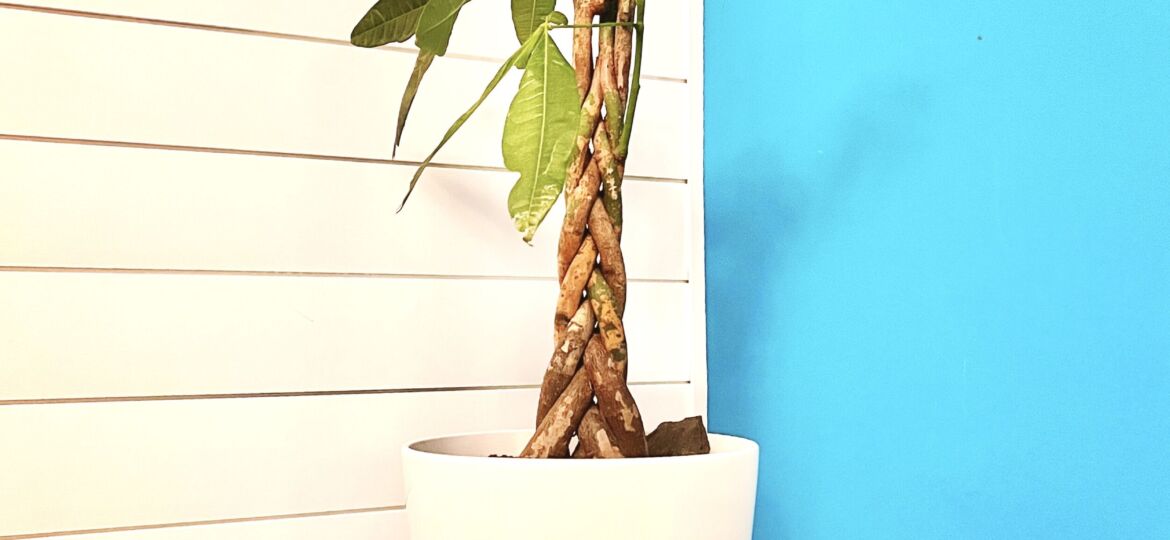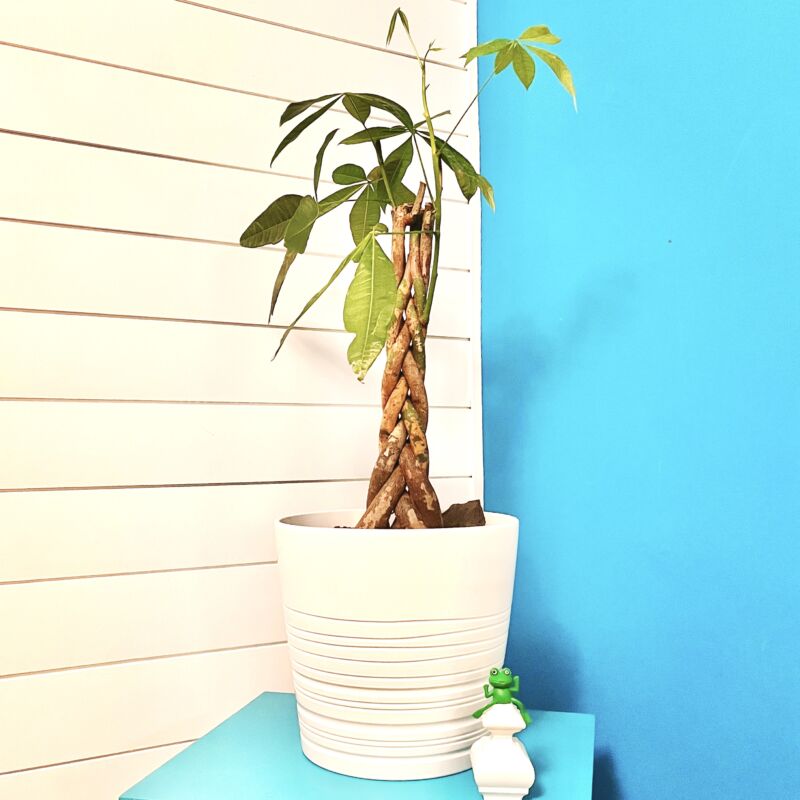
As houseplants, money tree plants are usually braided. They don’t grow naturally braided. It’s a human thing to braid the trees.
So why are money trees braided?
For structural integrity as houseplants, money trees plants (also known as Pachira plants) are actually four to five separate trees with their trunks braided together.
Since they can grow up to 60 feet tall, they tend to seem a bit skinny as solo trees. While most money trees end up at just a few feet tall inside our homes, they can reach about 7 feet tall if there’s space for their roots and trunks to stretch out indoors.
When did money tree braiding start?
There is a popular story behind how money tree braiding started. In the 1980s, a truck driver named Liu decided to braid two together. The Pachira plant then continued to braid as it grew, becoming a desirable ornamental bonsai for many.
And, some say the braids “lock-in” and keep prosperity and success from escaping a home.

Do money trees grow flowers or fruit?
Money trees have dark glossy leaves, and can fruit large pods of edible nuts. The fruit pods can grow as large as footballs when they have the space and right environment to grow really tall. The raw nuts have been described as being similar to peanuts, but they taste more like chestnuts when they are cooked.
There is a popular story about an ancient farmer who found a money tree growing in his field. He became rich from growing them and selling the edible seeds. According to the story, this farmer gave the name ‘Money Tree’ to the Pachira plant after he struck it rich from growing them.
Why are money trees lucky?
Part of the reason why money trees are associated with luck and good fortune is the tale of how the plant has changed the fortune of the farmer and truck driver.
Another reason is that the plant has five leaves, which is important in Feng Shui. There are five Feng Shui elements: water, earth, fire, metal, wood, and water. When a home has all five elements, it is known to attract good fortune.


